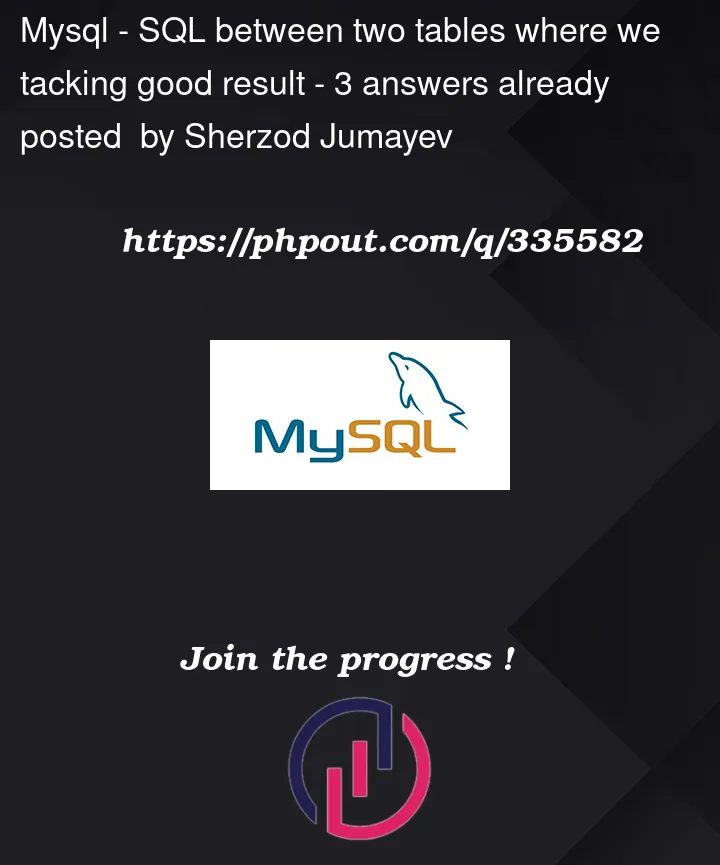I have an issue between two tables in sql
Table 1
| name_id | 1 | 2 | 3 |
|---|---|---|---|
| SPEC-A | 100 | 110 | 120 |
| SPEC-B | 200 | 220 | 230 |
Table 2
| name | name_id | cat |
|---|---|---|
| M.John | SPEC-B | 2 |
| J.Smith | SPEC-A | 3 |
So I would like to connect two tables where I would like to select persons name_id and his category in table 2 with rows and columns in table 1
select *
from table 1
inner join table 2 on table1.name_id = table2.name_id
But I can’t connect table2.cat with each columns in table 1
for example table2.cat = 2 with table1.2 automaticaly.
I would like to see next:
| name | name_id | cat | price |
|---|---|---|---|
| M.John | SPEC-B | 2 | 220 |
| J.Smith | SPEC-A | 3 | 120 |
I would like to see next:
| name | name_id | cat | price |
|---|---|---|---|
| M.John | SPEC-B | 2 | 220 |
| J.Smith | SPEC-A | 3 | 120 |




3
Answers
The query will be :
But your data structure does not respects the state of art in data modeling…. SO the performances will be catastrophic….
Table 1 will gain to be split into 2 tables :
Then you can have a view that presents the old version of "Table 1"… (with some PIVOT operator or at least a CASE statement).
It’s so much easier to talk about your problem if you use realistic column names. I’m using table1 etc and col2 etc.
In a consistently designed database table1 would look like this:
table1 (name_id, cat, price).You say, though, that you are forced to work with the inappropriately designed table.
My suggestion: Tell them they should change their data model. If they are intelligent people they will probably do so.
If they don’t, create a view that represents the missing table:
The column names 1, 2 and 3 are a horror of course and can cause problems. Above
CREATE VIEWstatement uses syntax that is valid only in MySQL. Standard SQL does not use backticks for names. In standard SQL you’d use double quotes (") instead. So depending on what mode MySQL is run in, one or the other form will be invalid. With such names the database administrator must make sure to decide for one mode and rigidly stick to it.The query will become a simple:
If you are not allowed to create the view and they don’t do it for you either, then use an ad-hoc view: